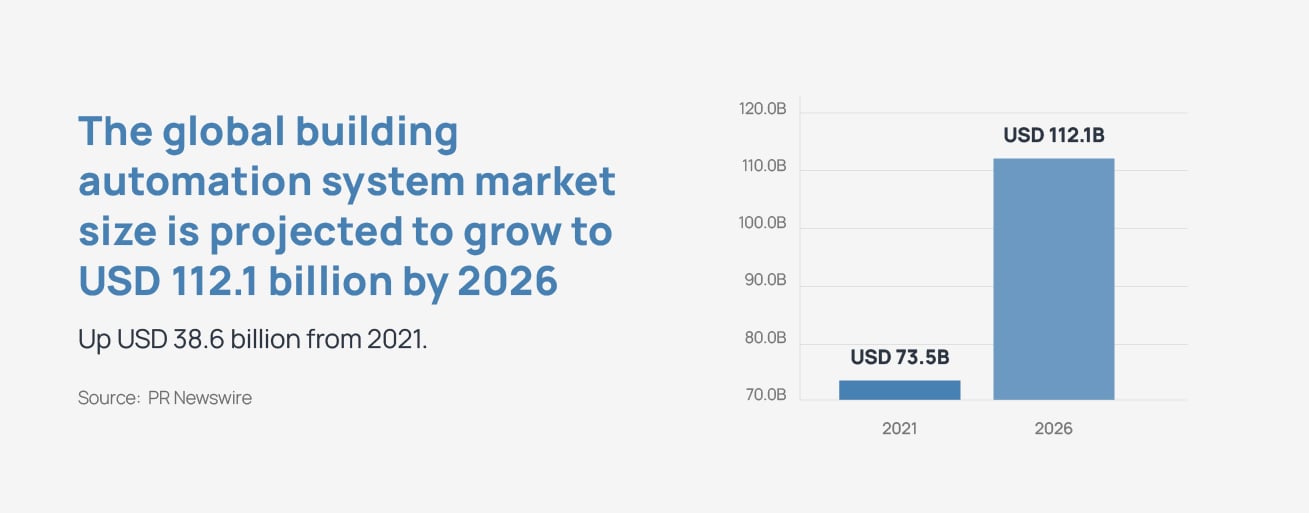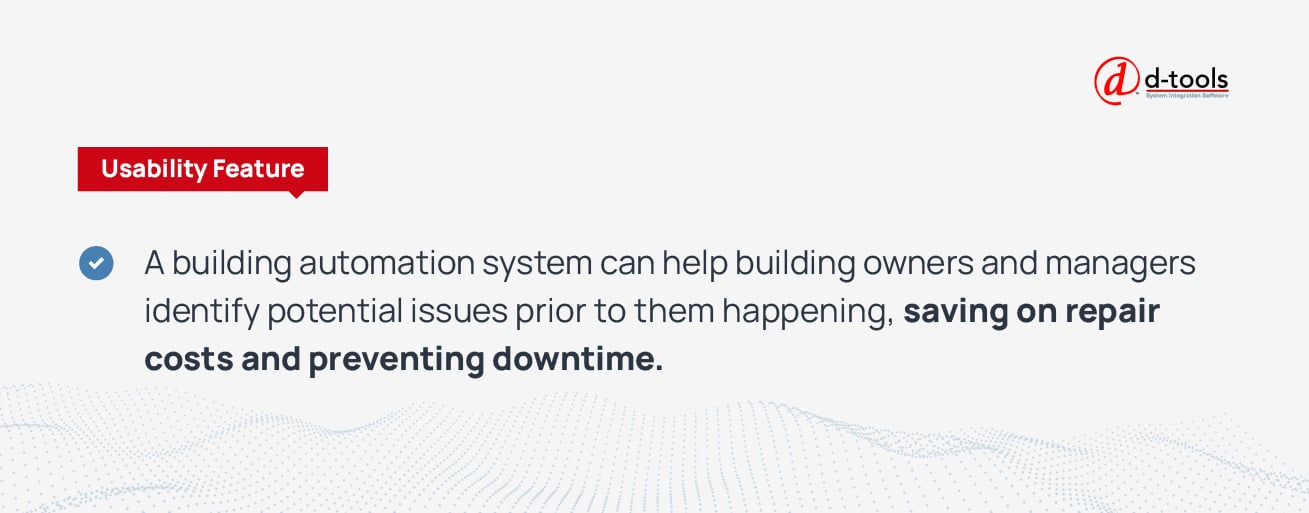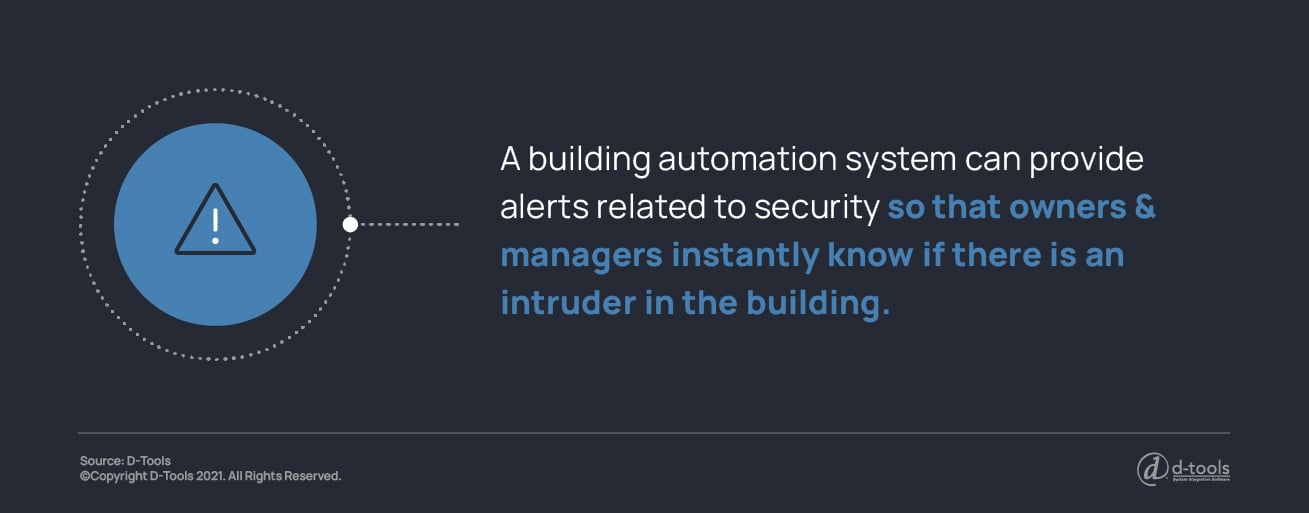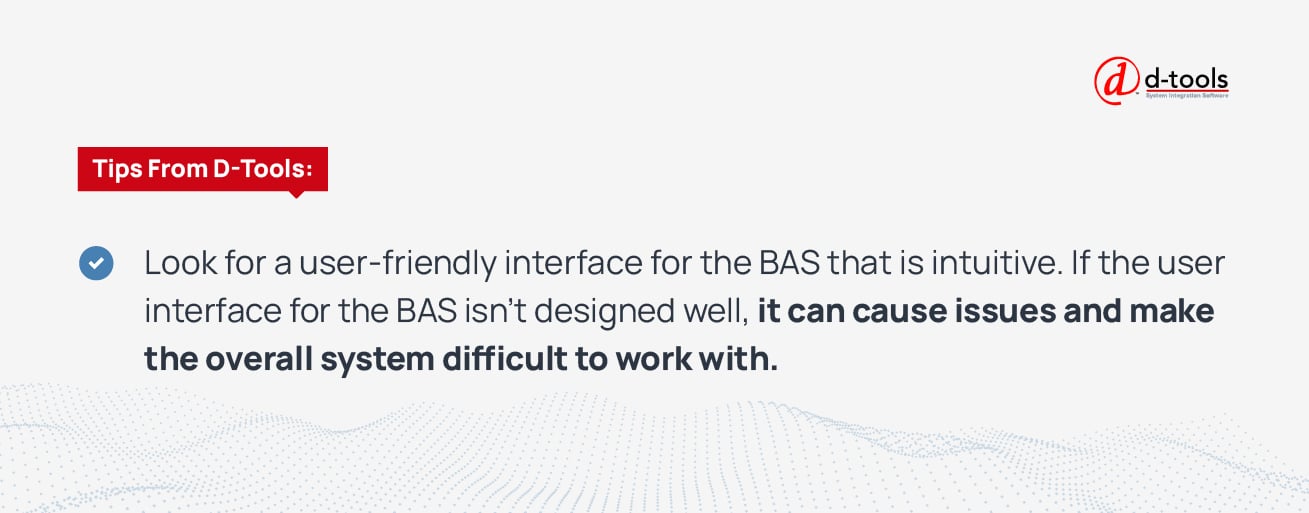There are many benefits to implementing a building automation system. Some of these include lower operating costs, lower maintenance costs, improved energy efficiency, and more comfort for occupants. Implementing these systems has become more popular as the demand for energy-efficient facilities with increased security detail grows.

With all the advantages today’s building automation systems can offer, it’s easy to understand why a building owner or manager should choose to implement one. However, there are some key factors to take into consideration when undergoing a building automation system installation.
Define BAS
A building automation system, or BAS, controls the operation of essential building functions. Thus, a BAS consists of both hardware and software. Different BAS components can include security alarms, elevators, lighting, heating, ventilation, elevators, and more.
Though it’s easier and more cost-effective to put a BAS into place during the building construction process, it can also be done afterwards by integrating new systems and controls into the existing architecture.
A well-designed BAS should work quickly and remotely, as not many building owners and managers are always on site. In a world where many are expected to work with fewer resources, installing a BAS can make managing a building and its various functions run more smoothly.

In addition to improving efficiency, a BAS can help building owners and managers identify potential issues prior to them happening, saving on repair costs and preventing downtime, essentially adding an extra layer of safety and peace of mind.
What Should the BAS Do?
The BAS automatically controls many functions of a building, but it also provides monitoring services that can alert owners and managers of critical issues as they come up.
For example, a BAS can send an alert if the temperatures within the building are too high or low, signaling an issue with the heating and cooling systems. This allows for quick action to resolve the issue.
A BAS can also provide alerts related to security so that owners and managers instantly know if there is an intruder in the building. In addition, it can send alerts about air quality or about other problems with the building’s mechanical workings.

BAS Layers
Most BAS setups are made up of four different layers, each functioning together. These layers include:
- The server/application layer, which gathers the output from different supervisory devices
- The supervisory layer, which compiles the traffic from the field controller layer
- The field controller layer, which analyzes the data from the inputs and output
- The input/output layer, where the sensors and control devices are located
Building Automation System Components
Within each BAS layer, there are a number of components. Following is a list of the five main components that make up some of the leading BAS setups, including explanations of how the BAS components work together to increase the overall efficiency of a building:
1. Sensors
The sensors within a BAS are the heart of the system. They monitor and track all of the individual components of the BAS, which include the temperature, lighting, security, and more. If any sensor detects an issue, it will send an alert to the system controls.
2. System Controls
This part of the system is responsible for managing all of the data that is submitted by the sensors. Based on this information, the system controls can send instructions to the different system components. For example, it can alert the heating or cooling system to increase or reduce temperature if the sensor detects an issue.
3. Devices to Control Output
The output devices are the ones that actually carry out the commands sent out by the system controls. Some of these functions may include reducing or increasing heat in different parts of the building depending on the time of day, turning off or dimming lights in parts that aren’t currently in use, or turning on security alarms and monitoring on a daily schedule.
4. Communication Languages
A BAS uses its own communication language to send commands within the system. All the components within the system understand and interact with this language. The two main languages that are most often used within a BAS are BACnet and Modbus.
5. User Interface
The user interface is what the building owner or manager can access to see the current status of all of the building’s systems. It also allows the owner or manager to manually make adjustments to the current system settings, if necessary.

Choosing a user interface for the BAS is an important decision, because it’s the way that a building owner or manager will primarily interact while with the BAS. If the interface isn’t designed well, it can cause issues and make the overall system difficult to work with. Look for a user-friendly interface that is intuitive. The interface should have a modernized look and be able to offer analytics and comparison tools. It should be easily accessible and not involve complicated apps that need to be frequently updated.
The interface should also allow for manual adjustments as needed to ensure the comfort of building occupants, no matter the situation.
The Bottom Line: BAS for the Client and the Building
As a systems integrator, you know what a BAS is, what it does, and what components it requires. But, by taking the time to view the BAS through the eyes of the client, you can ensure you deliver the right solution for their needs. You’ll also ensure to save precious time and headache by using D-Tools' end-to-end core business software to streamline your project workflow along the way. Schedule a guided tour to learn more.


